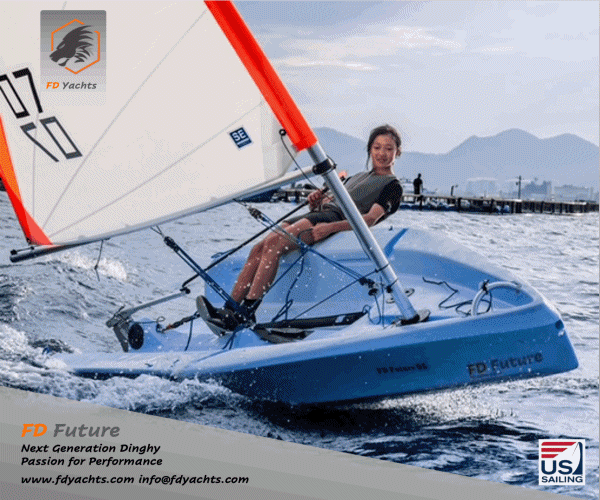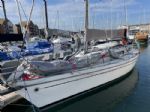











| Laser 28 - Excellent example of this great design Hamble le rice |
 |
| Rossiter Pintail Mortagne sur Gironde, near Bordeaux |
 |
| Laser 140101 Tynemouth |
 |
List classes of boat for sale |
A guide to sailing a Laser 5000 |
Post Reply 
|
| Author | |
Webmuppet 
Really should get out more 
Joined: 11 Mar 06 Location: Suffolk Online Status: Offline Posts: 534 |
 Post Options Post Options
 Quote Quote  Reply Reply
 Topic: A guide to sailing a Laser 5000 Topic: A guide to sailing a Laser 5000Posted: 15 Nov 08 at 8:33pm |
|
Hi Peeps,
Found the following guide on the Laser 5000 Class Association website - some you will have seen it before (if so, sorry) however it was new to me, enjoy Nigel Alternative Sailing GuideRigging the boatMost important thing to remember when rigging your Laser 5000 is to allow no more than 25 minutes between arriving at the club and the firing of the starting gun. Bring absolutely no tools, as these are much more conveniently borrowed from other yachties just as they are heading for the water with the tools safely locked away inside the car. This shouldn't cause too many problems though, as the keys will be tucked away in the rear bumper, just under the left tail-light (isn't that where you leave yours?). Step the mast and raise the jib. Take a good crack just under the right eyebrow from the flailing jib clew while you thread both jib sheets around the same side of the mast. Ensure that at least one kite sheet runs underneath the pole, and that the spinnaker halyard and pole out-haul go out side of the flick flock. Jump into your wet-suit, which should either be:
As you forgot your spray top, just wear the jumper your mother knitted for you for Christmas. One more day's sailing shouldn't hurt it. Pull on your harness and wind up the tension on the shoulder straps until you walk like E.T. (and speak like him too). Leave the centreboard securely locked inside the car (keys just inside the rear bumper etc.), forget to take off the antique watch you inherited from your grandfather and it's time to hit the water. Launching a Laser 5000The boat should be held by the crew in such a way that his Royal Highness can step cleanly in without getting wet above the ankles. The crew should then proceed out into deep water, just a little bit further than the point at which all traction with the slip is lost. The helm can take his time to slot on the rudder, a process that will require plenty of instructions to be issued to the crew on just how to hold the boat steady. Having achieved this, you can pop the centre-plate in the slot, grab the mainsheet and depart. The crew should preferably come along as well. He/she should leap nimbly out of the shoulder-deep water over the high side of the already-heeling Laser 5000, straight onto the wire and pull in the jib-sheet while ... NO, LET IT GO, f**! sh%@ f&^%, GET IT IN! ON THE WIRE ... Make for the start-line, ensuring you get there in time to come barrelling in, in everyone's way right on the pin. LanguageIt's worth deviating for a moment to discuss language and its use on the Laser 5000. All violent activity - tacking, gybing, starting, bagging the kite, twin wiring with the kite, sailing a Laser 5000 in Garda etc. - should be punctuated by appropriate comment from both skipper and crew. It should go something like this: F#$k F#$k F#$k F#$k F#$k Sh&& F#$k Sh&& ... It must really help, because everyone seems to do it. StartingIt would make sense to start like this: Approach the point at which you want to start with 40-50 seconds to go, dive round to leeward of some unsuspecting victim and round up underneath them both on the wire with 20 seconds left, hitting the line at full tilt 1-2 seconds after the gun with clear water underneath you. Do not attempt this as a beginner. It really shags other boats off, especially when they are the unsuspecting victims, and a better way to shag them off is this: Hit the committee boat hard with about 20 seconds to go, and because you don't want to cross the line early, just bear away and accelerate along the line, hitting all others in front of you. You might hear some language like that described above but remember thatís fast. The first beatAfter the start, you should be neatly placed in some really bad air. Move well away from your crew and things might smell better. If you don't have a faster boat driving clean over the top of you, take at least 30 seconds to get settled down and wiring properly - there's sure to be someone going over the top of you by then. Everyone knows you have to tack to find clear air, so do this immediately, then tack back in front of a good group of approaching boats so that they all have to go around your now-stationary boat. Remember that if a Laser 5000 feels comfortable going to windward, you're not pointing high enough or sailing it sufficiently level. Round up until the jib backs, and the helm should ease off the main until the crew gets washed off the back of the boat. You're sailing it sufficiently level when you can't breath because the water coming off the bow is taking you round the head. TackingThere is a fundamental rule of Laser 5000: No tack ever feels like it works 100%. If you've just done a tack that worked, don't worry, the next one will be total sh*t. Uncleat the mainsheet and say "Tacking" sufficiently quietly that you can't be heard. Leap into the boat, put the helm down and get caught on the wrong side of the boom by your trapeze wire when you can't unhook it. Meanwhile, the crew should be caught about half way over the boat with feet tangled in the biggest knot of ropes since the last Hangmen's conference. The crew should also fail to get the jib released. When all this is sorted, the crew should yank the jib bar-tight on the next tack, forcing the boat to heel enormously so that the cockpit scoops up 200 litres of water, and go out on the wire, leaving the jib totally over-powering the rudder and the boat going sideways. Recommended communication during the tack goes like this: Helm - "F$%k F$%k F$%k F$%k F$%k F$%k": Crew - (calmly from the wire as the helm struggles in the centre of the cockpit) - "What the hell are you doing?". Such comments help a lot. Bearing away at the top markThis is impossible. Don't bother trying. Spinnaker workKite work is simple if you remember a few simple rules. The crew should, as ever, obey the quiet orders of the Transom-Ballast regardless of whether their arms are about to pull out of their sockets. The real magic of course is to be performed by the helm: When the boat starts to heel to starboard, steer right; To port, steer left; To the front, yell something incomprehensible and follow a parabolic trajectory over the cockpit and head-first into the forestay. If you were twin wiring up-hill, you should be twin wiring downhill as well. This is not as difficult as it seems, as the better you get, the more cash you can justify spending on buying and repairing sails. There is a common myth that foot-loops for twin wiring the kite somehow either slow boats down or prevent their yachtsmen from being Real Laser 5000 Yachtsmen. This myth is part of a clever plot devised to ensure maximum frequency of spectacular prangs. If you do have foot-loops, make sure that they hang in such a way that the crew can't get his/her foot in. If necessary, the skipper can sit on them at the critical moment. At the gybe, the crew should balance the boat while not allowing the kite to collapse for more than half a second, regardless of the course steered by the helm. As ever, the helm will need to continually instruct the crew on what to do next. At the bottom mark, the crew should nimbly leap into the boat and bag the kite before leaping back out on the wire ready to take over the tactical decisions from the poor, exhausted helmsman. After the raceOne simple rule to remember - never be present when the glasses need filling. So that's how it's done. Now it's time to leave your wet-suit in the cupboard and the spinnaker in the garage and head for the water.
Cheers This guide has been adapted, with permission, from an original article on the Kiwi R Class Skiff website, which can be found at www.rclass.org. This lot make 18 Foot Skiff and International Canoe sailors look like rational, well-balanced individuals. |
|
|
I am the milkman of human kindness, I will leave an extra pint (Billy Bragg)
Graduate 2530 'Galaxy' |
|
 |
|
dave.blakesley 
Far too distracted from work 
Joined: 25 Mar 08 Location: United Kingdom Online Status: Offline Posts: 314 |
 Post Options Post Options
 Quote Quote  Reply Reply
 Posted: 15 Nov 08 at 10:44pm Posted: 15 Nov 08 at 10:44pm |
|
ah yes, adapted from the original R-Class version IIRC....
|
|
 |
|
laser4000 
Really should get out more 
Joined: 02 Aug 05 Online Status: Offline Posts: 589 |
 Post Options Post Options
 Quote Quote  Reply Reply
 Posted: 15 Nov 08 at 11:36pm Posted: 15 Nov 08 at 11:36pm |
It's like one of those 'New Virus that will pwn your hard-drive - donot open hotchix.pps as it will like totally hose your PC. This has been confirmed by microshoft and the FBI. Please circulate to all your friends" emails... |
|
 |
|
JimC 
Really should get out more 

Joined: 17 May 04 Location: United Kingdom Online Status: Offline Posts: 6662 |
 Post Options Post Options
 Quote Quote  Reply Reply
 Posted: 16 Nov 08 at 8:35am Posted: 16 Nov 08 at 8:35am |
|
It was quite a bit funnier as the original... especially if you'd sailed similar boats. When it went round the mailing list for a certain very similar sized UK boat I remember one guy, who's a pro on big boat hardware, describing how he was laughing out loud reading it, and someone else in the office, with a lead mine only background asking what was so funny, and y friend apparently replied, "don't worry: you wouldn't understand". You have, I think, really have had to have had a day when you've been completely unable to get round the windward mark without pitchpoling before you really appreciate why "This is impossible, don't bother trying" is quite such a fall about moment...
This is another good one from the Rs. I wish I could write things as funny as those two... http://www.rclass.org/humour/idealforwardhand/ an extract:- Jib commands: 1) Ease it - On its own, at the crew's discretion. 2) Ease it a bit - Around 1-2 inches. 3) Ease it a little bit - Around 1/64"-1/32". Never correct first time. Only issued to humour the skipper's frustration at the lack of boat speed. 4) Ease the b....y jib - Command usually issued when a gust is encountered while carrying the maxi kite and trying to make the wing mark in 20 knots of breeze. In order to hear this at its best, it is desirable for the ideal R crew to be fully stretched on the wire with the jib sheet safely tucked away behind the centre case to leeward. |
|
 |
|
Post Reply 
|
| Forum Jump | Forum Permissions  You cannot post new topics in this forum You cannot reply to topics in this forum You cannot delete your posts in this forum You cannot edit your posts in this forum You cannot create polls in this forum You cannot vote in polls in this forum |
Copyright ©2001-2010 Web Wiz
Change your personal settings, or read our privacy policy











 Printable Version
Printable Version Delicious
Delicious Digg
Digg Facebook
Facebook Furl
Furl Google
Google MySpace
MySpace Newsvine
Newsvine reddit
reddit StumbleUpon
StumbleUpon Twitter
Twitter Windows Live
Windows Live Yahoo Bookmarks
Yahoo Bookmarks Topic Options
Topic Options